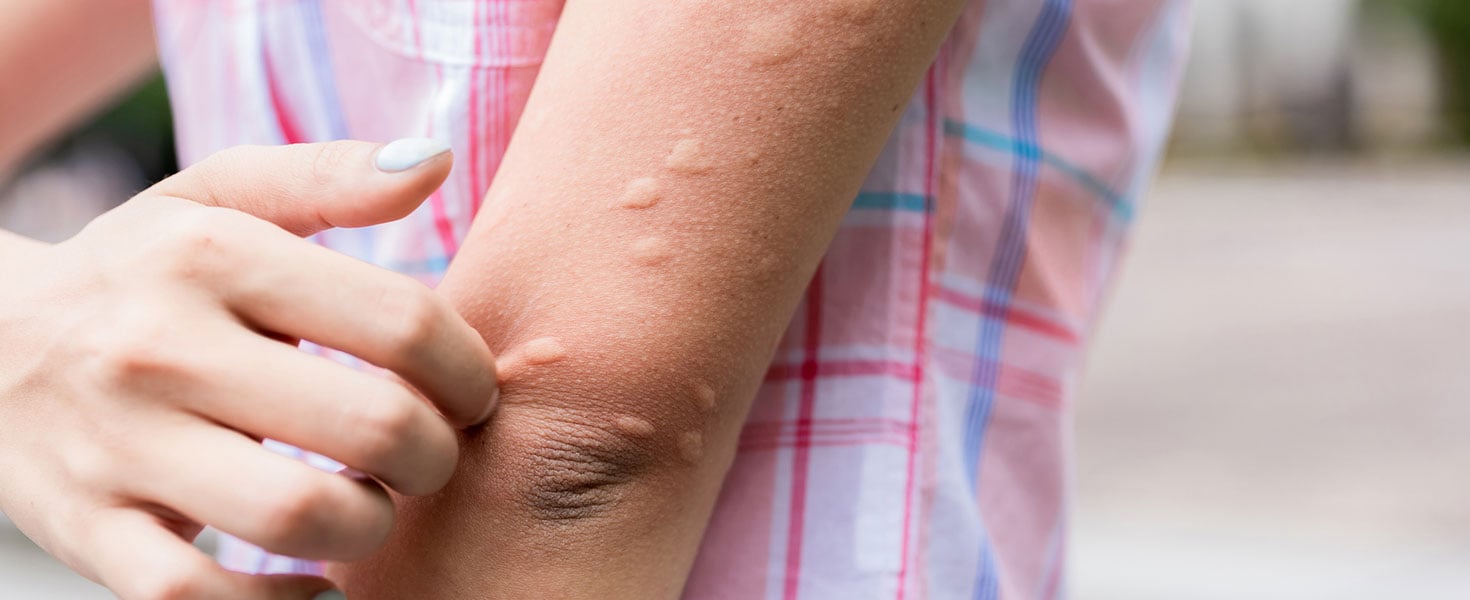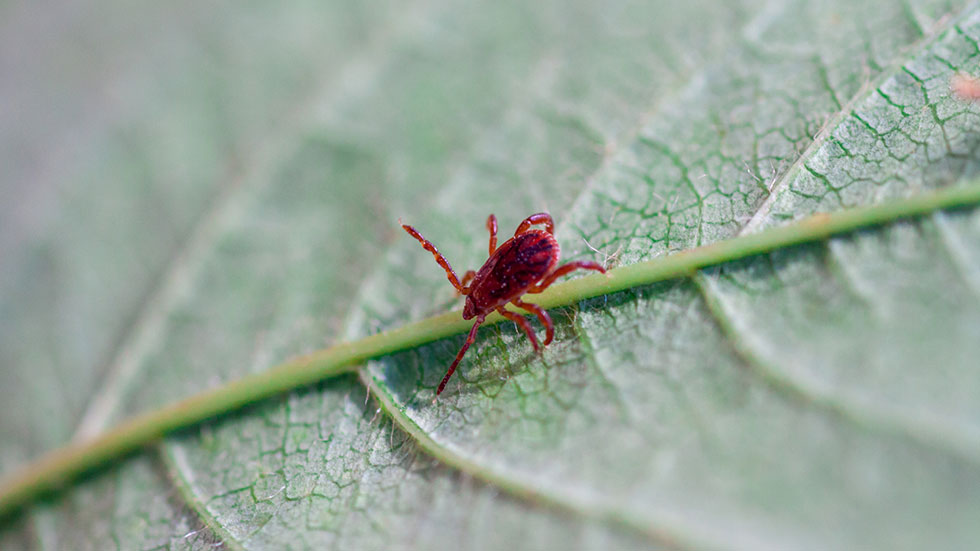

Most of us have been bit or stung by something, and before you even realized it happened, the culprit was nowhere to be found. The good news is the size and shape of the bite, as well as symptoms following the bite, can help provide insight into what might have bitten you, what to expect, and how to treat it.
Here’s a quick reference guide on how to identify various bug bites and know what insect may be responsible.

Tick bites
Symptom: Swelling or pain, rash/blisters, difficulty breathing, burning sensation
A tick bite may look like a dime-sized red spot, or a rash that looks like an expanding bull’s eye. Ticks live outdoors and can be found in grass, trees, shrubs, and leaf piles; so, if you’ve spent time outdoors, it may be the culprit. They also typically migrate to your armpits, groin or hair, so if that’s where the bite is located, it likely was a tick.
In most cases tick bites are harmless, but sometimes they can cause allergic reactions. If you experience a full body rash, neck stiffness, a headache, nausea, weakness, muscle or joint pain, a fever, chills, or swollen lymph nodes, you should seek medical attention as soon as possible.

Spider bites
Symptom: Fang mark bite, muscle cramps, abdominal pain
If you see two tiny puncture marks on your skin, you can probably blame a spider. Redness and swelling are also common.
Most spiders don’t even have fangs long enough to break your skin, and they are typically harmless. In most cases you’ll get a small bump on your skin that may be red, itchy, or slightly swollen, but symptoms won’t last long.
If you’re bitten by a venomous spider, such as a black widow or brown recluse spider, you may have more severe symptoms and should seek immediate medical assistance. Be aware if the bite brings pain that spreads to your back, belly, and chest or if you have stomach cramps, sweat a lot, have trouble breathing or a fast heart rate, or experience nausea or vomiting.

Mosquito bites
Symptom: Puffy reddish bump, small blisters, dark spots that look like bruises
Mosquitos cause small, puffy, round bumps that are typically isolated and very itchy. You’ll notice a bump almost immediately after being bitten. Sometimes you may see a tiny dot at the center of the bite.
Most of the time, reactions to a mosquito bite go away within a few days. You can treat these bites by washing them with warm soap and water, and using over-the-counter pain relievers, antihistamines, or topical anti-itch medications.
If you develop body aches, a headache, or fever after being bitten, contact your doctor. These could be signs of a more severe allergic reaction or mosquito-borne disease.

Bed bug bites
Symptom: Bites that are itchy, red, and in a line
These bites are small, red, and puffy, similar to mosquito bites, but often show up in lines or clusters. They could also have a distinct red mark at the center. Most people who are bitten by bed bugs experience symptoms such as irritation, sores, or itchiness.
Other signs of bed bug bites include burning, small red bumps or welts in a zigzag pattern, small red bumps surrounded by blisters, a raised itchy bump with a clear center, or a red, itchy bump with a dark center and lighter swelling in the surrounding area.
Bed bugs bite anywhere on the body where there’s skin, but focus on areas exposed during sleeping such as the neck, face, hands, shoulders, arms, and legs. In most cases, symptoms occur immediately after the bite but can develop or progress over several days.
Without further irritation, symptoms typically go away after about a week.

Chigger bites
Symptom: Itchy, red bumps that look like pimples
Chiggers are nearly invisible, but their bites cause flat, red patches, raised bumps, or even blisters. These bites are uncomfortable and itchy, but in most cases don’t cause any additional harm to your health.
You’ll find chiggers in moist, grassy areas like fields, forests, or even your backyard. They are also found near lakes and streams, and typically bite around the ankle and wrist areas. These bites appear in groups and get larger for several days to a week, and then will go away within a few days.
If you suspect chigger bites, wash exposed skin immediately with soap and water. You should also apply an antiseptic to any welts, and avoid scratching to deter infection. If symptoms don’t improve after about a week, or if you develop an infection, call your doctor.

Bee stings
Symptom: Mild to moderate swelling, warmth, itching, pain, redness, pimple-like spots
For some people, a bee sting may just leave a small light spot. Others may develop larger red welts with a white spot at the center. Or, if you have an allergy, you may develop hives or other severe symptoms such as swelling of your tongue or throat and difficulty breathing. In this case, seek immediate medical attention.
Mild reactions may also include an instant, sharp, burning pain or slight swelling around the sting area. In most cases, the swelling and pain go away within a few hours. For moderate reactions, that may include extreme redness and increased swelling, symptoms should resolve over a period of five to 10 days.
If you’re stung by multiple bees, you may have more severe symptoms due to the accumulation of venom. These include nausea or vomiting, headache, feeling of spinning, fever, or dizziness.
